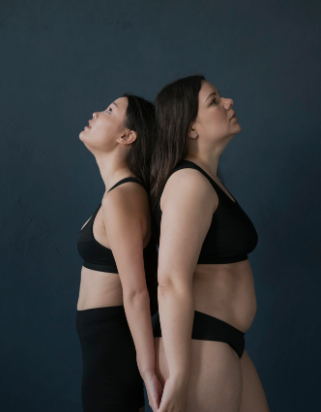Although tummy tuck surgery (abdominoplasty) is commonly viewed as a cosmetic procedure aimed at achieving a slimmer and firmer abdomen, Korean plastic surgeons often emphasize that, in certain cases, a tummy tuck becomes a reconstructive medical necessity. This distinction is important not only for clinical decision-making but also for insurance eligibility and ethical considerations.
1. Reconstructive Indications According to Korean Surgeons
Top Korean plastic surgery clinics, particularly those affiliated with university hospitals or multidisciplinary centers, classify tummy tuck as reconstructive in the following medically significant cases:
A. Post-Massive Weight Loss Patients (MWL)
After bariatric surgery or major weight loss (often over 30–50kg), patients are left with:
- Large overhanging abdominal skin folds (panniculus)
- Chronic rashes, infections (intertrigo), or ulceration
- Impaired mobility and hygiene
👨⚕️ Dr. Kim Jae-Hoon (Seoul National University Hospital, Plastic Surgery Dept.) explains:
“For massive weight loss patients, the panniculectomy and extended abdominoplasty improve not only physical comfort but also restore function. In these cases, the goal is no longer aesthetic—it is to eliminate chronic wounds, allow for normal walking, and improve quality of life.”
B. Abdominal Wall Hernia Repair
Patients with:
- Umbilical hernias
- Ventral/incisional hernias
- Diastasis recti causing functional pain and posture issues
Surgeons often combine abdominoplasty with hernia repair, using mesh reinforcement and deep muscle tightening.
👨⚕️ Dr. Lee Min-Young (Asan Medical Center, Plastic & Reconstructive Surgery):
“Hernia correction alone does not restore the structural integrity of the abdominal wall. When paired with rectus muscle plication during a tummy tuck, patients report reduced back pain, improved core stability, and even better breathing mechanics.”
C. Postpartum Abdominal Trauma
Some women experience:
- Severe rectus muscle separation
- Umbilical distortion
- Skin necrosis or cesarean scar deformities
In such cases, reconstructive abdominoplasty helps repair both muscular and soft tissue damage caused by pregnancy or obstetric complications.
D. Functional Impairment from Excess Skin
In patients with:
- Large skin folds causing hygiene issues
- Difficulty fitting into clothing or walking comfortably
- Psychosocial distress or anxiety
The procedure is justified medically under Korean health care ethics and is often documented with photography, dermatologic findings, and physical limitations.
👨⚕️ Dr. Han Seung-Woo (Gangnam Samsung Medical Center):
“We don’t only treat appearance—we treat suffering. If a patient’s abdominal skin fold causes infection, bleeding, or interferes with daily life, it qualifies as reconstructive surgery.”
2. Korean Guidelines: Differentiating Cosmetic vs. Reconstructive
While national insurance in Korea typically does not cover purely cosmetic procedures, some abdominoplasties are partially reimbursed if:
- A documented functional impairment exists (e.g., panniculitis, intertrigo, or hernia)
- A board-certified plastic surgeon provides a medical indication letter
- The procedure is done in a certified general or university hospital
3. Surgical Approach Differences
Reconstructive tummy tucks in Korea are often:
- Longer and more complex than standard cosmetic tummy tucks
- Involve collaboration with general surgeons for hernia or internal repairs
- Require hospitalization of 2–5 days, unlike outpatient cosmetic surgery
4. Mental and Physical Recovery Support
Korean clinics also prioritize mental health in reconstructive patients:
- Psychological counseling is offered for patients with body dysmorphia or depression post-weight loss
- Post-op physical therapy is available to restore core function
Final Takeaway:
In Korea, tummy tucks are not always cosmetic. When performed for medical reasons such as chronic infection, hernias, or muscle damage, abdominoplasty becomes a reconstructive surgery with tangible health benefits. Korean plastic surgeons advocate for a holistic approach—balancing functional outcomes, psychological wellbeing, and aesthetic refinement.




